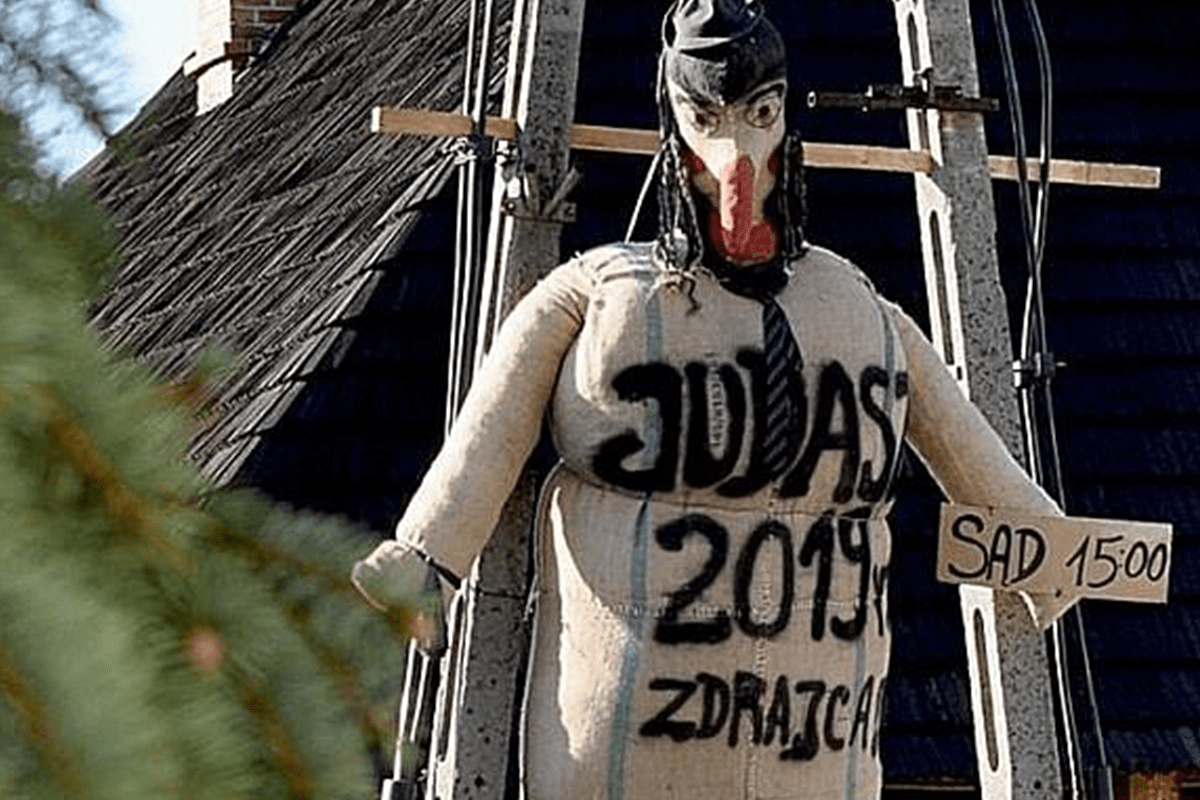When I worked for the Anti-Defamation League more than a decade ago, relations between the Polish government and the Jewish community worldwide were incomparably better than they are now. But even then, there were occasions when the anti-Semitism that has been such a fixed feature of religious and political life in Poland for centuries would, when given an opportunity, make itself felt.
One afternoon, I was taking notes of a meeting between a Polish governmental delegation and senior ADL officials led by the then-national director, Abraham Foxman. As I recall it, the atmosphere was friendly and pleasant, and the discussion was briskly routine.
What might appear as a backhanded compliment in this generation was a warrant for genocide in the previous one.
The confronting of a Polish delegation with evidence of anti-Semitism on its own front door wasn’t an easy sight to witness. Most of them struggled for a response as Foxman explained the anti-Jewish lineage of the images in front of them. One of them did pipe up, however. “Mr. Foxman, I think you don’t understand,” he said. “This is meant as a compliment, admiration that Jews are clever people.” But Foxman wasn’t having it. “You are rationalizing what cannot be rationalized,” he retorted. What might appear as a backhanded compliment in this generation was a warrant for genocide in the previous one. In the final analysis, the linkage of Jews with grasping wealth is perhaps the most deadly of all the anti-Semitic tropes out there, and even if you embellish a cartoon Jew counting coins with a smile, the message remains the same.
The giant-size effigy of Judas that was ceremonially burned in the rural Polish town of Pruchnik on April 19, on Good Friday, wasn’t wearing a smile. In fact, as anyone who saw the photos of this wretchedly backwards event would have noticed, there was nothing benevolent about it, with its hooked nose, its sidelocks, its wide-brimmed hat, and the words “Traitor” and “Judas 2019” scrawled in black ink across its misshapen, straw-filled body.
Truly ugly, though, was the destruction of this object. Goaded on by adults, a group of children who couldn’t have been older than nine or 10, and some much younger ones, dragged the effigy through the cobbled streets of the town. Along the way, they kicked its head and beat it with sticks. Then some of the adults demonstrated how to really get stuck in—with a sweaty, red-faced venom that suggested they imagined a real Jew under their boots.
Just before the effigy was set alight and thrown from a bridge into the river below, the children punished it one more time with their sticks. As is well known, the Christian Bible claims that Judas betrayed Jesus to the Roman authorities for 30 pieces of silver. Accordingly, the children lashed at the effigy 30 times. A local journalist who was present for the spectacle reported that as the kids whipped the Jewish caricature on the ground in front of them, an adult voice urged them to “give him five more for the fact that they”—the Jews, that is—“want compensation from us.”
Just as is the case with the schmaltzy Jew statues sold in Warsaw and Krakow, the effigy of Judas in Pruchnik encapsulated the anti-Semitic canard about Jews and money. That canard in particular gave anti-Semitism its murderous character in the pre-World War II period in Poland—to be crystal-clear, a time before the Germans invaded, when anti-Semitic rioting was rife. In 1931, Roman Rybarski, a well-known economist and ultra-nationalist politician, published a widely distributed article blaming the Jews for Poland’s devastating economic crisis. “Polish public opinion will turn against the Jews, and it will be exclusively the result of their own politics,” he wrote.
The sentiment underlying that well-crafted sentence is exactly the same as the “Traitor” scrawl on the Judas effigy almost 90 years later; money is the real deity of the Jews, and the Jews will sacrifice anything and anyone—even the “son” of God—if their bottom line instructs them to do so. So, when the chickens come home to roost, they have only themselves to blame for their fate.
This way of thinking about the Jews as a self-interested collective whose aspirations are opposed to those of the larger nation is as old as anti-Semitism itself. Decades of Holocaust education, anti-Semitism-awareness training and emotional mea culpas from clergy and politicians alike have proven unable to sweep it away. Unlike in the previous two centuries, the burning of an anti-Semitic effigy was not followed by an anti-Semitic pogrom because the Jews who lived in that part of Poland are no more; they all perished during the Nazi occupation. Memories of their presence have faded, and yet the hatred that blighted their daily lives remains as fresh as the morning dew.


























